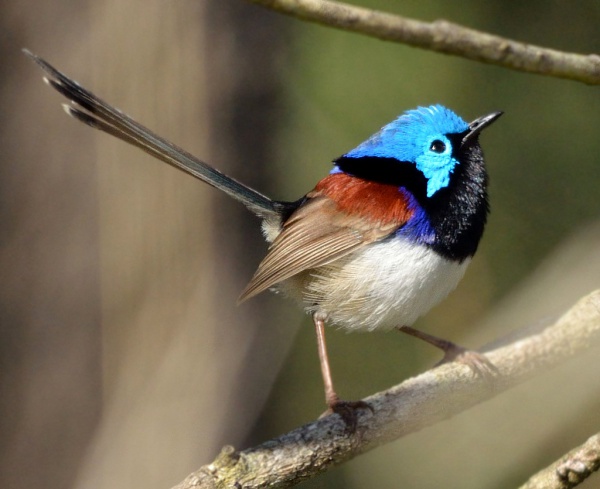Facts About Variegated fairywren
The variegated fairywren is a captivating bird native to eastern Australia, easily recognizable due to its pronounced sexual dimorphism. During the breeding season, males display vivid colors, while females, juveniles, and non-breeding males exhibit more subdued hues. These birds are sociable, living in small groups that vigilantly defend their territories throughout the year. They primarily feed on insects and are commonly found in scrubby vegetation east of the Great Dividing Range.
Taxonomically, the variegated fairywren belongs to the genus *Malurus*, which encompasses eleven species known as fairywrens. Initially believed to be part of the Old World flycatcher family, they were subsequently reassigned to the Maluridae family. This species has undergone several taxonomic revisions and is currently classified as a subgenus within *Malurus*.
The evolutionary history of the variegated fairywren indicates that the chestnut-shouldered fairywren group originated in northern regions, with populations gradually migrating southward and diversifying into distinct species. Molecular studies support this hypothesis and have led to the reclassification of some populations as a separate species, the purple-backed fairywren.
In terms of appearance, the variegated fairywren exhibits marked sexual dimorphism. During the breeding season, males are adorned with striking blue and chestnut feathers, while females and non-breeding males are predominantly grey-brown. These birds possess unique vocalizations used for communication and territorial defense.
Variegated fairywrens flourish in scrublands with dense vegetation, often seeking refuge in mammal burrows. They are active feeders, foraging for insects on the ground and among the foliage. Breeding occurs in spring and summer, with nests constructed in thick vegetation close to the ground.
However, these birds face numerous threats, including nest predators like magpies and introduced species such as foxes and feral cats. To protect their nests, fairywrens engage in distraction displays. Interestingly, the variegated fairywren has even been featured on an Australian postage stamp.
